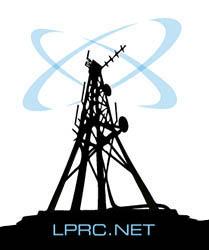Frequencies
LPRC Repeater Frequencies
|
||||||||||||||||||||||||||
More About the 442.900 Repeater System
The 442.900 repeater is active to communicate with other hams through a network called “WIN System”, otherwise known as the “Western Intertie Network”.
If you tune to 442.900 MHz, you should hear traffic from most of California via UHF. This is a very busy system.
Sometimes, you will hear others that log in via the Internet from other countries. Contacts have been made to countries like South Africa with an HT on this system through our repeater.
Make sure you program your transceiver to the standard positive offset and program the PL tone for 162.2 to transmit. You must have a Technician Class Amateur Radio License or greater to use this resource.
Visit http://www.winsystem.org for more information about the Winsystem.
Standard Repeater Information
The two voice repeaters operate in the duplex mode. In other words, you listen on one frequency and talk on another. It’s not too complicated as your radio does the switching for you .
The repeater output (the frequency on which the repeater transmits) is what you see displayed on your rig. If you watch your radio as you then transmit, you’ll see the repeater input (the frequency on which you transmit) displayed on your dial.
On two meters, the repeater split (transmit to receive) is 600 KHz. On 440, the split is 5 MHz. You’ll have to read your radio manual to see what buttons to press to put your rig in the “repeater” mode. An easy way to check is to look at your display and you should see a “+” or a “-“ to indicate the frequency shift or “offset”.
You will also hear the term SIMPLEX. This is when your transmitter frequency is the same as your receive frequency. LPRC encourages you to use the repeater as need but when you are close together (inside a mile or two) please use simplex on a different frequency. The most common SIMPLEX frequency is 146.52 MHz on two meters or 446.000 MHz on 440. SIMPLEX is also used should a jammer or other interference be on one of our frequencies.
Set your rig to the repeater input (your transmit frequency) and see if you can hear the interference. You already know that you can hear the interference on the output of the repeater and now you are trying to see if you can hear it on the input to the repeater. If you can, you are probably fairly close to the interference. It is now time to call one of the LPRC board members and we can track it down.
Private line, or PL is a way to keep the frequencies available to club users only. Another term for PL is CTSS (Continuous Tone Squelch System). You might also hear the term “touchtone”. What these terms mean is that when you transmit your voice to the repeater, your rig also transmits a set tone with it. You as the operator have to set your rig to transmit this particular tone.
Once again, it is merely a function of reading your manual and pushing a few buttons. The repeater is set to transmit only when it receives that tone that it hears with your voice. In other words the repeater is not in “carrier access” (voice only) and will not respond to a voice only transmission nor will it respond to any other transmission unless it contains that one preset tone.
You normally cannot hear the PL tone (although some claim they can), it is used merely as a key to use the repeater. All voice LPRC repeaters use the PL tones referenced above.


